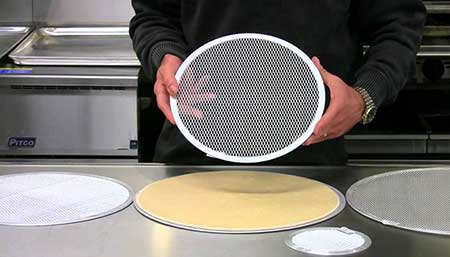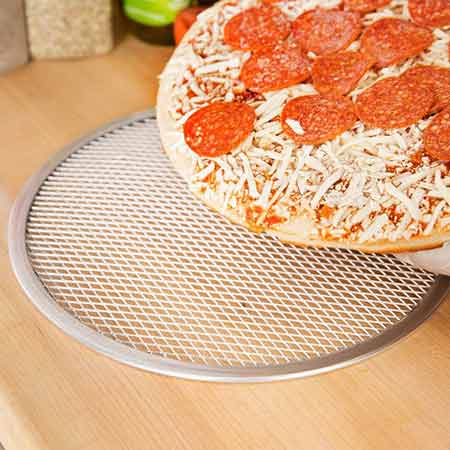How To Season Pizza Screens: The Ultimate Guide
The pizza screen is a flat mesh disk that allows air and heat to pass through the dough. It is true that pizza screens are great for cooking dough evenly. However, often this means that they may come out too dry. To prevent this, pizza screens should be seasoned.
In this article, we will discuss how to season your pizza screens and why it is important. Furthermore, we will show you how to keep them in good condition.
Why Should You Use Pizza Screens?
If you want to make the perfect pizza, then using a pizza screen is an excellent choice. The dough needs to be cooked evenly and this is why a pizza screen is used in most cases. Pizza screens have a number of benefits for making pizzas.
Pizza screens are simple to use. They cook the dough evenly, and they allow air and heat to pass through the dough. They’re relatively cheap and easy to find as well.
Why Is It Important to Season Pizza Screens?
Before you can use a pizza screen, it should ideally be seasoned. This will prevent your dough from sticking to the pizza screen and this means that the perfect crust will form every time.
You will achieve a great-tasting pizza as a result. Seasoning your pizza screens will allow you to not only create a non-stick surface, but you will also be able to make cleanup easier. As a result, they will last a longer period of time if they are prevented from rusting.
However, if you skip this step, then the dough might stick to your pizza screen and ruin the whole meal. Seasoning a pizza screen is not as difficult as it may appear at first glance. In fact, the steps to do it are relatively simple.

Instructions on How to Season Pizza Screens
Now let’s review the steps that need to be taken in order for you to season pizza screens. They are as follows:
Step 01: Clean the Pizza Screens
The first step is to ensure that your pizza screens are clean and free of any dirt or dust. This will allow the oil to form a better coating around it.
It can be cleaned using hot soapy water and a stiff brush. When you’re done, rinse it thoroughly and pat dry with paper towels.
Step 02: Apply Oil to the Pizza Screens
The second step is to decide what type of oil you’re going to use. Oils that are most commonly used are vegetable oil, sunflower seed oil, or safflower seed oil. You can also use avocado oil. Avocado oil has a high smoke point, which makes it a good choice for seasoning pizza screens.
If you have chosen your oil, lightly dab the pizza screen surface with oil using a paper towel or brush. It is important that you wipe any excess oil off the pizza screen on both sides.

Step 03: Heat the Pizza Screens
The third step is to use your oven. You can preheat it to 375˚-500˚F and place the rack on top of your oven inside of it.
Once heated, bake the pizza screens for about an hour. Once this time has elapsed, turn off the oven and allow the pizza screens to cool.
Tips for Maintaining Your Pizza Screens
There are a number of different tips that you should know about if you want to maintain your pizza screens properly. They’re as follows:
1. Make sure that you clean your pizza screens properly after each use, as this will prevent any rusting from happening.
2. Do not store your pizza screens in a damp area, as water will cause rust to form on the surface. If it does get wet, then dry it thoroughly and store it until further use.
3. To prevent your pizza screens from rusting, it is best that you hang them up or store them in a dry place.
We recommend that you hang your pizza screen on the pizza screen rack. With the rack, the screens are protected against accidental damage and can be easily accessed within a secure storage facility.

Conclusion
No matter what kind of pizza you want to create, using a pizza screen will give you great results every time, as it allows the crust to develop nicely.
However, before you use it for the first time, you need to season your pizza screens properly. Hopefully, now that you understand why and how to season a pizza screen, you will use it without any problems.







